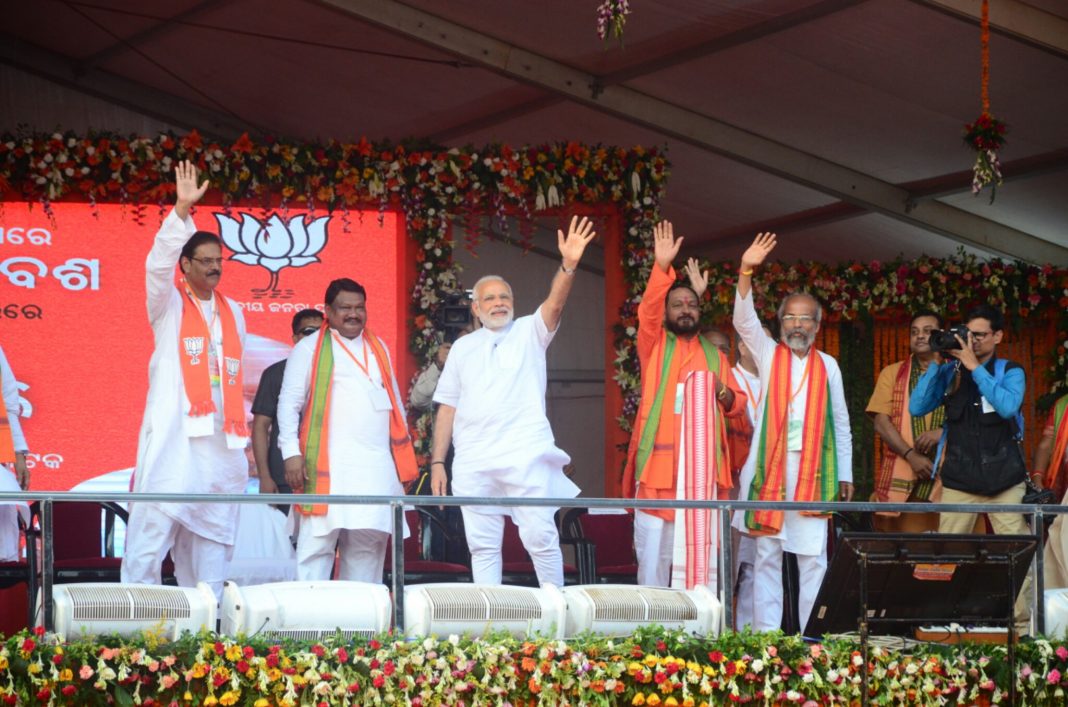Elections 2019: Discerning Electorate Unlikely To Fall Into ‘Towering Personality’ Trap

Modi vs who? The question fits neatly into the reductive universe of binaries we have settled into. It is also in sync with the strategic design of the ruling dispensation, which has a leader to flaunt while the rivals have none. But binaries are inherently problematic. They disregard the relevance of nuances and foreclose all other possible
options.
Does it really have to be Modi vs X scenario in 2019? Not necessarily. Elections of the past suggest that the Indian electorate is not exactly fascinated with the idea of a towering leader. It has a habit of looking at the totality. At least for a vast majority, which the educated lot derisively calls the ignorant voter, voting decisions follow objective assessment of existential reality. They form positive or negative perceptions on the choices before them on the basis of everyday experiences, both personal and external. The leader can only be a force-multiplier in a multi-stranded campaign but not its singular talking point.
There’s great risk involved in making an individual the sole plank of an electoral campaign. This is for a couple of reasons: one, the assessment of his current popularity across cross-sections of the population may not be entirely accurate; and two, unlike the first time, he would be judged on the basis of concrete achievements. If the gap between promise and delivery is big then there is a problem.
Also, if the image of the leader is built on propaganda, then parties need to be cautious. At times, parties start believing their own propaganda and it leads to disastrous consequences. It makes them overconfident, complacent and irreverent to reality. The result of the 2004 elections is a case in point. The BJP got carried away by its own India Shining campaign and felt Atal Bihari Vajpayee was unbeatable in
the absence of another leader to match his stature.
Narendra Modi of 2018 is not the Narendra Modi of 2014. His oratorical magic is still beyond comparison, but his achievements as prime minister don’t quite measure up to expectation. The grand measures such as demonetisation and GST, salutary in their intention as they may be, have not delivered the results. The disruption caused by the
measures still has the economy reeling. The aftermath of the surgical strikes has seen more Indian soldiers being martyred. Pakistan continues to be the problem it was, perhaps worse. As agitations all over the country suggest, farmers and small traders are angry. And to make matters worse, global oil prices have started shooting up.
There are no easy solutions to the complex issues the country faces, many of which are part of legacy, many not of the prime minister’s making. But that’s the reality. Voting behaviour is shaped by it to a large extent. A powerful leader is hardly the counterweight to it.
Performance is finally what counts.
All this could still be forgiven as hazards of office. But then there was the ‘ideology’ butting in. Modi’s sheen was considerably dimmed by the activities of the Right wing fringe groups. In the years after 2014, their activities have hogged the limelight as much as the prime minister’s, if not more. Their relentless acts of violence and vandalism have punched holes in the good governance script of the latter. At some level, they have managed to put the ideology and people in conflict.
Modi’s biggest challenge in the months leading to the general elections would be to undo the damage caused by them. But there’s little evidence he would. He can ill-afford to hurt a vote bank that swears by him. Also, there’s symmetry of thought. His continuing silence on the activities of the fringe reveals as much. It is possible that he will pander to them more openly since a ‘us vs them’ division has been created and he has to take a clear position.
There’s little evidence to suggest that India has become better under Modi. In some ways, it has become worse. Perhaps that brings into question the validity of the ‘Modi vs who’ binary. It is immaterial whether a credible challenger is absent.
(This is the first in the series of articles in which we will discuss several aspects of the post-2014 period and the way India changed)
Disclaimer: The views expressed by the author are his own and do not necessarily represent those of the web portal

Comments are closed.